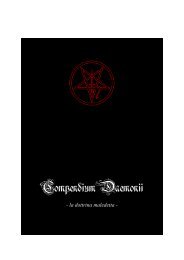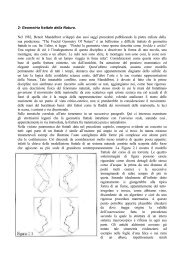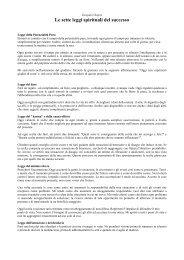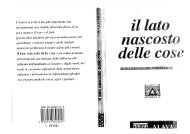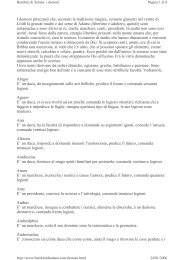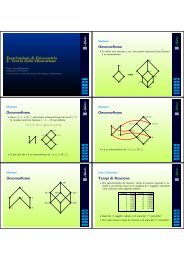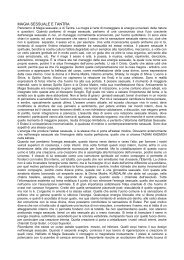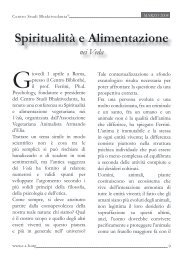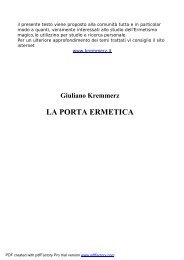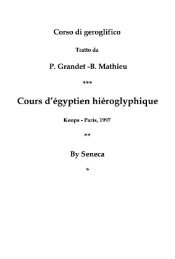Yale University Press NEW HAVEN & 9 780300"089028 - Sito Mistero
Yale University Press NEW HAVEN & 9 780300"089028 - Sito Mistero
Yale University Press NEW HAVEN & 9 780300"089028 - Sito Mistero
- No tags were found...
You also want an ePaper? Increase the reach of your titles
YUMPU automatically turns print PDFs into web optimized ePapers that Google loves.
12 ~ TALIBANincreasing autonomy from central control in Kabul. The Pashtuns werealso weakened by the British conquest of north-west India, which for thefirst time divided the Pashtun tribes between British India and Afghanistan.This partition of the Pashtuns was formalised by the Durand Line, aformal border drawn up by Britain in 1893.After the second Anglo-Afghan war, the British supported Amir AbdulRehman's claim to the throne. The 'Iron Amir' (1880-1901), as he wascalled, received British support to centralize and strengthen the Afghanstate. The Amir used British subsidies and arms supplies to create aneffective administration and a standing army. He subdued rebellious Pashtuntribes and then moved north to ruthlessly end the autonomy of the \Hazaras and Uzbeks. Using methods that were to be closely followed Icentury later by the Taliban, he carried out a nineteenth-century version!of ethnic cleansing, massacring non-Pashtun opponents and transporting jPashtuns to settle farms in the north thereby creating a loyal Pashtpopulation amongst the other ethnic minorities.Abdul Rehman crushed over 40 revolts by the non-Pashtuns during his jreign and created Afghanistan's first brutal secret police force, a precursor!to the communist Khad in the 1980s. Although these moves integrated \Afghans of all ethnic groups and solidified the Afghan state as never jbefore, much of the subsequent ethnic tensions in northern Afghanistanand the inter-ethnic massacres after 1997 can be traced back to the Iron jAmir's policies. His other legacies, which were to indirectly influence the ITaliban, included the isolation of Afghanistan from Western or modernizinginfluences including education, his emphasis on Islam by enhancingthe powers of the Pashtun mullahs and introducing the concept of adivine right to rule rather than the traditional concept of election by the jLoya Jirga.The successors of the Iron Amir in the early part of the twentieth Icentury were by and large modernizes, who established full formal independencefrom Britain in 1919, established the country's first constitutionand set about creating a small urban educated elite. Nevertheless the factthat two Afghan kings were assassinated and that there were periodic"]tribal revolts demonstrated the difficulties rulers faced in turning a multi-jethnic tribal society into a modem state.The end of the Durrani dynasty came when King Zahir Shah, whoruled since 1933 was deposed by his cousin and brother-in-law SaMohammed Daud who sent Zahir Shah into exile in Rome. Afghanistan!was declared a Republic and Daud ruled as president. Daud was helped]by leftist officers in the army and the small, urban-based Parcham partyled by Babrak Karmal, to crush a nascent Islamic fundamentalist move-]ment. The leaders of this movement fled to Peshawar in 1975 and werebacked by Pakistan's Prime Minister Zulfiqar Ali Bhutto to continue their 1INTRODUCTION: AFGHANISTAN'S HOLY WARRIORS ~ 13opposition to Daud. These leaders, Gulbuddin Hikmetyar, BurhanuddinRabbani and Ahmad Shah Masud were later to lead the Mujaheddin.Daud turned to the Soviet Union for aid to try and modernize the statestructure. From 1956 to 78 the Soviet Union gave a total of US$1.26billion in economic aid and US$1.25 billion in military aid to Afghanistan,as the Soviets welded the country into their sphere of influence atthe height of the Cold War. During the same period, the US gaveAfghanistan US$533 million in total aid, much of it in the 1950s afterwhich Washington lost interest. By the time Daud seized power Afghanistanhad become a rentier state with 40 per cent of state revenues comingfrom abroad. Yet Daud, like his royal predecessors failed to build institutions.Instead, a loose centrally administered bureaucracy was laid overthe existing society with little public representation except in the nowlargely nominated Loya Jirga. 6Just five years later in April 1978, Marxist sympathizers in the army,who had been trained in the Soviet Union and some of whom had helpedDaud to power in 1973, overthrew him in a bloody military coup. Daud,his family and the Presidential Bodyguard were all massacred. But thecommunists were bitterly divided into two factions, Khalq (the masses)and Parcham (the flag) and their lack of understanding of Afghanistan'scomplex tribal society led to widespread rural revolts against them. Asmullahs and khans declared jihad or holy war against the infidel communists,the communist ruling elite were themselves trapped in internecineviolence. The first Khalqi communist President Nur Mohammed Tarakiwas murdered, while his successor Hafizullah Amin was killed whenSoviet troops invaded Afghanistan in December 1979 and installed theParcham leader Babrak Karmal, as President.Within a few short, dramatic months Afghanistan had been catapultedinto the centre of the intensified Cold War between the Soviet Unionand the USA. The Afghan Mujaheddin were to become the US-backed,anti-Soviet shock troops. But for the Afghans the Soviet invasion was yetanother attempt by outsiders to subdue them and replace their timehonouredreligion and society with an alien ideology and social system.The jihad took on a new momentum as the USA, China and Arab statespoured in money and arms supplies to the Mujaheddin. Out of this conflict,which was to claim 1.5 million Afghan lives and only end whenSoviet troops withdrew from Afghanistan in 1989, would emerge a secondgeneration of Mujaheddin who called themselves Taliban (or the studentsof Islam.)



